Why You Should Plant Sedge Grass—and 10 Great Varieties to Grow
These low-maintenance native plants boost biodiversity and are pretty on the eye.
Sedges are grass-like plants belonging to the genus Carex—and there are so many reasons they make a great addition to a garden.
They are versatile and gorgeous, adding height, texture, and movement anywhere you plant them. Many people plant sedge grass because it is low-maintenance and has a beautiful range of colors, from green and yellow hues to purple and red. With over 2,000 species, you can find sedge grass varieties for almost every type of garden and climate. They are often drought-tolerant, making them a great choice for more arid climates.
"Thanks to the diversity of habitats in which Carex are found in the wild, from mountain tops to coastal dunes, there is a Carex for nearly every garden condition imaginable," says Sam Hoadley, Manager of Horticultural Research at Mt. Cuba Center.
Sedge grass is often planted as a ground cover, used in rain gardens, as a border, and as a substitute for lawns, both mowed and unmowed. And planting sedges native to your region offers a boost to biodiversity. "Their leaves are the food sources for caterpillars of several species of butterflies and moths, their seeds are eaten by a variety of birds and small mammals, and Carex themselves provide shelter to a diversity of animals," says Hoadley.
With all these perks, it's no wonder these grass-like plants are so beloved by gardeners! Ready to dive into the world of sedges? Here are 10 varieties native to the United States that experts recommend.
Meet Our Expert
Sam Hoadley, manager of Horticultural Research at Mt. Cuba Center
Mary Phillips, head of native plant strategy for the National Wildlife Federation
Related: Carex Is One of the Best Grass Alternatives for Your Lawn, Say Horticulturalists
Pennsylvania Sedge (Carex Pensylvanica)
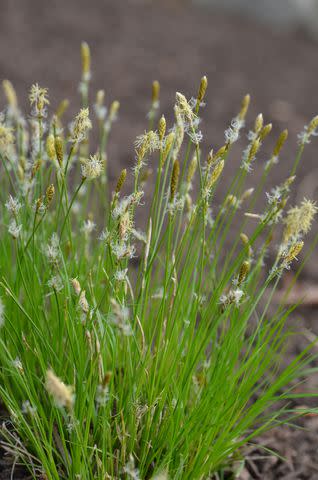
Looking for a sedge grass to grow in the shade? Consider Pennsylvania sedge. "It is a wonderful companion to other plants in both shade and sun and will slowly spread by rhizomes to weave a groundcover under its taller neighbors," says Hoadley. The narrow leaves or blades are deep green and grow about 12 inches high.
If you want to reduce or eliminate your lawn, this sedge grass makes a great alternative. "In a garden bed, this can reduce or eliminate the need to apply seasonal mulch, and this species can even be used as a turfgrass lawn substitute, especially in dry shade," says Hoadley.
Zone: 3 to 8
Height: Up to 12 inches tall
Light: Full shade to full sun
Appalachian Sedge (Carex Appalachica)
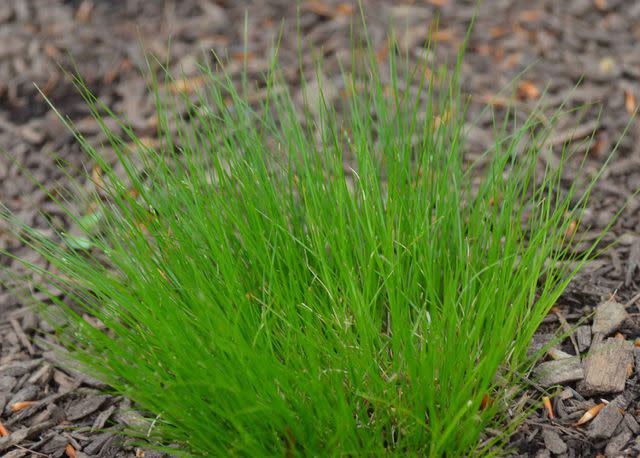
Appalachian sedge, or Carex appalachica, has fine, slender leaves and is commonly found in the wild in the Appalachian Mountains. Because this sedge thrives in the shade, this makes a wonderful ground cover under trees or any area on your property that doesn't receive much or any sun. You can also grow it in containers or use it as a border, such as planting along a walkway. "Carex Appalachia is well equipped to grow in rocky soils with excellent drainage but will be happy in cultivation as long as the soils aren’t too wet," says Hoadley.
Zone: 3 to 7
Height: up to 12 inches
Light: shade or sun
Eastern Star Sedge (Carex Radiata)
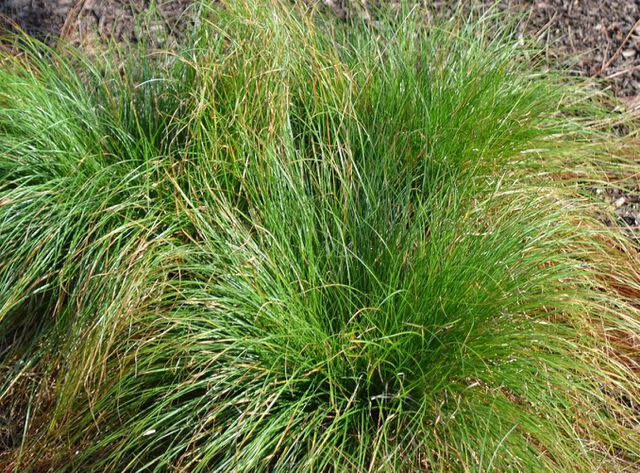
Eastern star sedge has tiny star-shaped flowers when in bloom in the spring. If you have a rain garden or are considering an alternative to a lawn, eastern star sedge is a good option as it can grow in both partial shade and partial sun. Native to Central and Eastern North America, this sedge does best in moist soil. This plant makes a great food source for songbirds and gamebirds, says Phillips.
Zone: 4 to 7
Height: 12 to 24 inches
Light: Partial shade to full sun
Palm Sedge (Carex Muskingumensis)
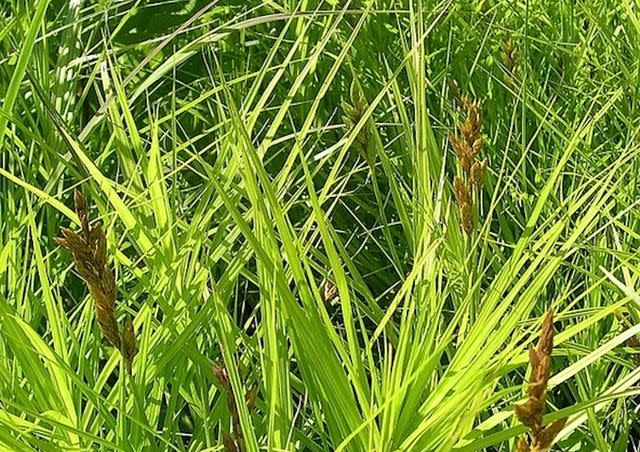
Native Plants Nursery
Palm sedge, also known as Muskingum sedge, is named after the Muskingum River in Ohio. This sedge is native to the Midwest and thrives in wet and moist soil conditions. The leaves look like palm fronds with a bright lime-green hue. This sedge grass is a food source for many bird species and can tolerate a variety of soil types, including soil with poor drainage, says Phillips.
Zone: 4 to 7
Height: 12 to 24 inches
Light: Partial shade to full sun
Related: 10 Perennial Ornamental Grasses That Will Add Texture and Color to Your Garden
Cherokee sedge (Carex Cherokeensis)
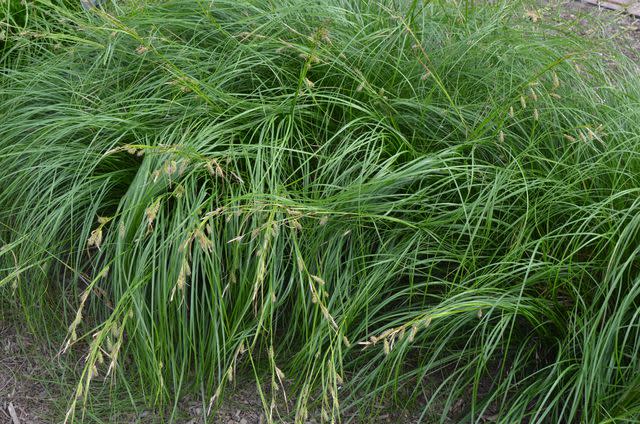
Found in moist woodlands of the Southeastern United States, Carex cherokeensis is a versatile sedge that can adapt and thrive in both shade and full sun. Often reaching heights of 3 feet and around 4 inches wide, Cherokee sedge can be planted individually or in big groupings. "Thanks to this considerable size and presence in the landscape, It can be used effectively alone as a specimen in a garden bed or large container while maintaining the flexibility to be used in mass to create a stunning and unique groundcover," says Hoadley. "While its flowers and fruit add movement and texture, the real ornamental muscle of this species lies in its lustrous emerald-green foliage that remains attractive in all seasons."
Zone: 6 to 9
Height: Up to 3 feet
Light: Shade and full sun
California meadow sedge (Carex Pansa)
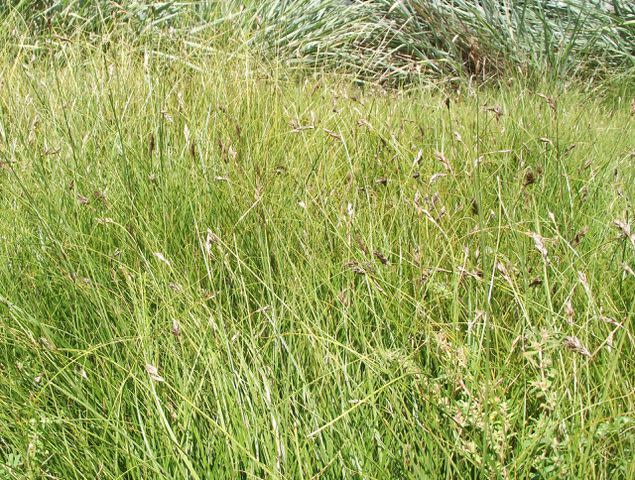
Tortie tude
The region you live in will guide you on the best types of sedge grass to grow in your garden. For instance, California meadow sedge is native to the West Coast, where it will thrive. This sedge manages in both partial shade and full sun and can grow in many types of soils. It makes an excellent lawn alternative because of its rounded grass-like foliage, says Mary Phillips, Head of Native Plant Strategy for the National Wildlife Federation. Plus, this grass can adapt to many types of soils and is drought-tolerant, she adds.
Zone: 8 to 11
Height: 6 to 12 inches tall
Light: Partial shade to full sun
Related: How to Grow a Tapestry Lawn—the Landscaping Trend That Turns Your Yard Into a Living Masterpiece
Plains Oval Sedge (Carex Brevior)
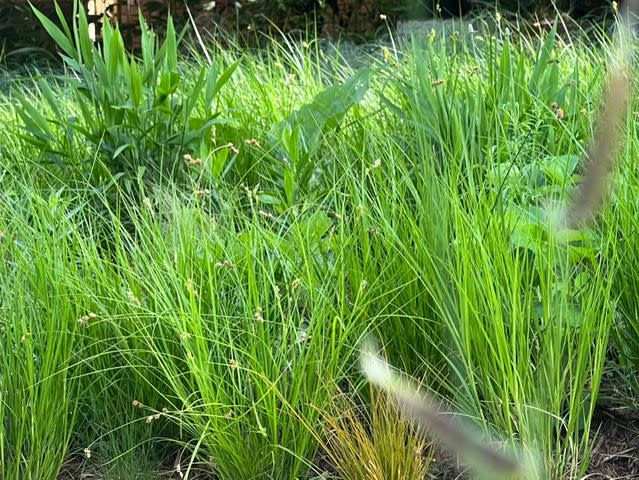
Native Plants Nursery
If you have sandy soil and want to grow sedge grass, consider plains oval sedge. It is one of the few sedges that can tolerate dry, sandy soils and wet soil, says Phillips. A versatile sedge native to most of the central and northeastern United States, this sedge makes a wonderful ground cover and, as a bonus, can be grown in both full sun and full shade.
Zone: 3 to 8
Height: 1 to 4 feet tall
Light: Full sun to full shade
Plantain-Leaf Sedge (Carex Plantaginea)
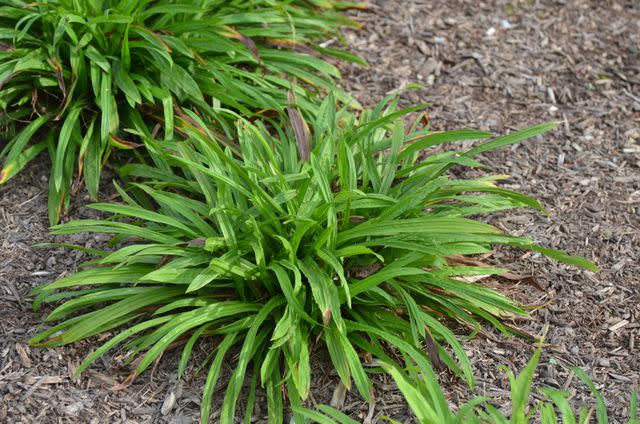
With wide, wrinkled, bright green leaves and purple-hued sheaths, plantain leaf sedge grows well in many soil types. The leaf shape creates unique textural interest and is widely considered the most ornamental sedge, says Phillips. If you have issues with erosion or a hilly landscape, this sedge is ideal for managing erosion. You'll find this grass species in forests in the eastern United States.
Zone: 4 to 8
Height: 1 to 2 feet
Light: Partial sun to full shade
Texas Sedge (Carex Texensis)
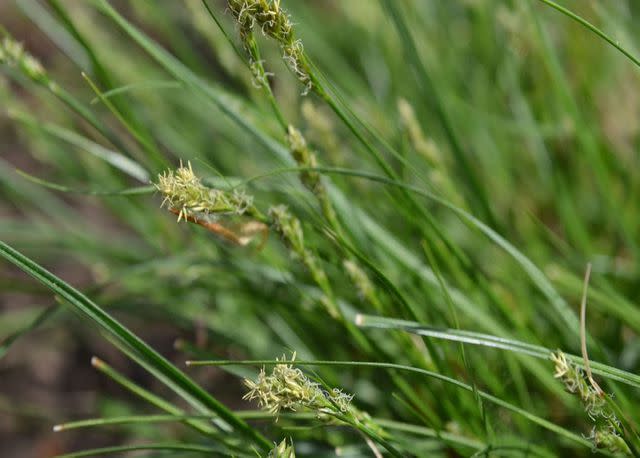
Texas sedge, also known as Caitlin sedge, is commonly found in meadows and sandy woodlands in the central and eastern United States. "Carex texensis is a great species for use as a groundcover or even as a lawn alternative," says Hoadley. "Its thread-like foliage and clumping habit remain attractive all growing season, and it is adaptable to a wide variety of cultivation conditions."
Zone: 5 to 9
Height: Up to 12 inches
Light: Partial shade to full sun
Wood’s Sedge (Carex Woodii)
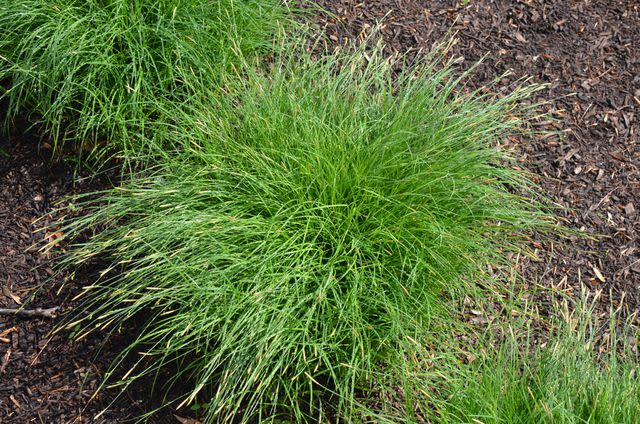
A low-growing and low-spreading sedge, wood's sedge has similar qualities to Pennsylvania sedge but does a better job at suppressing weeds, thanks to its dense foliage. Found in forests in the midwestern and eastern United States, wood's sedge thrives in the shade and can adapt to full sun. The color changes from a blue-green hue in the spring to green in late spring and summer as temperatures increase. "Wood’s sedge put on a show in late April and early May with carpets of straw-colored inflorescences that are held neatly above its blue-green grassy foliage," says Hoadley.
Zone: 4 to 8
Height: Up to 12 inches
Light: Full shade to full sun
Read the original article on Martha Stewart.

